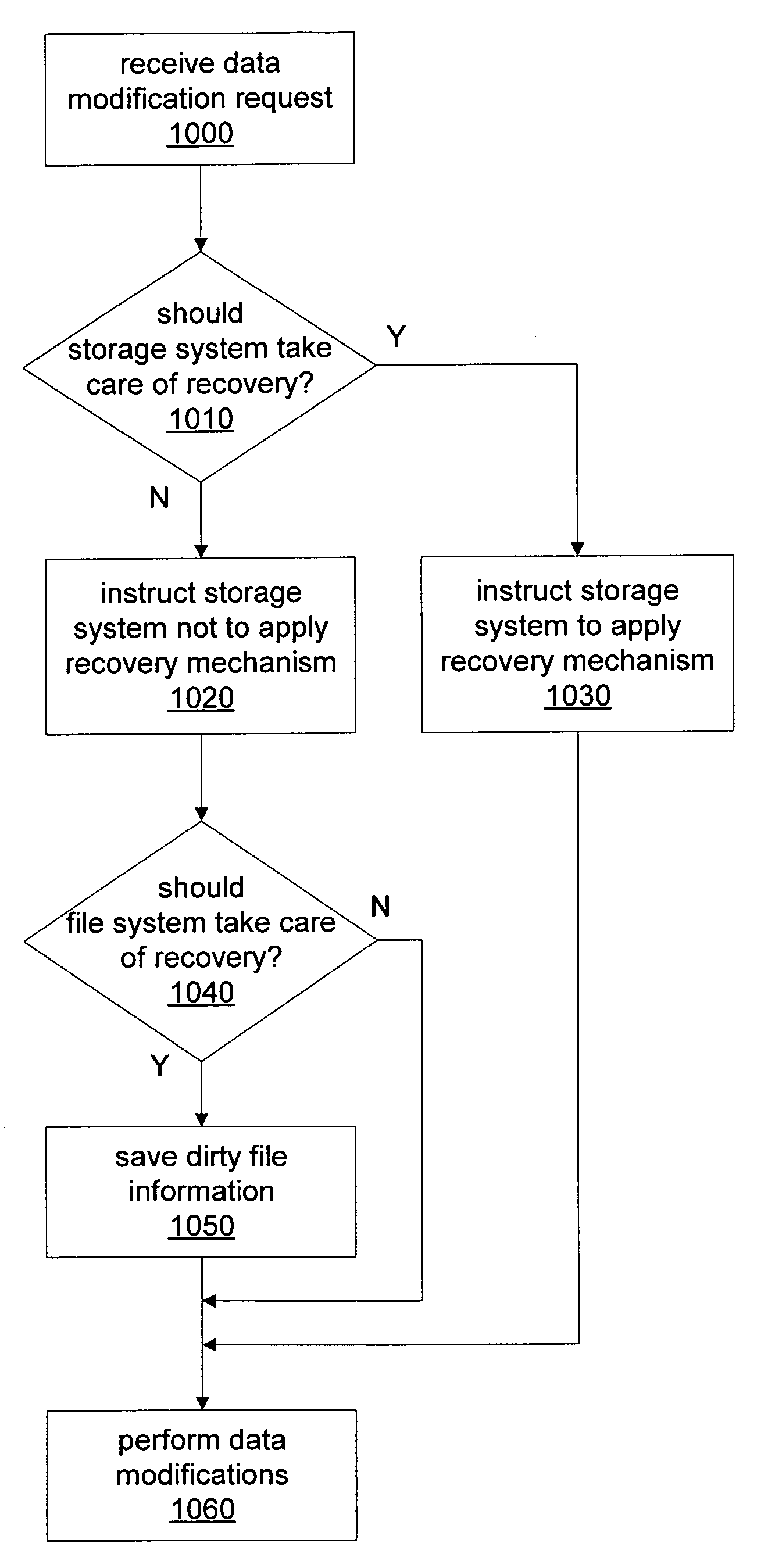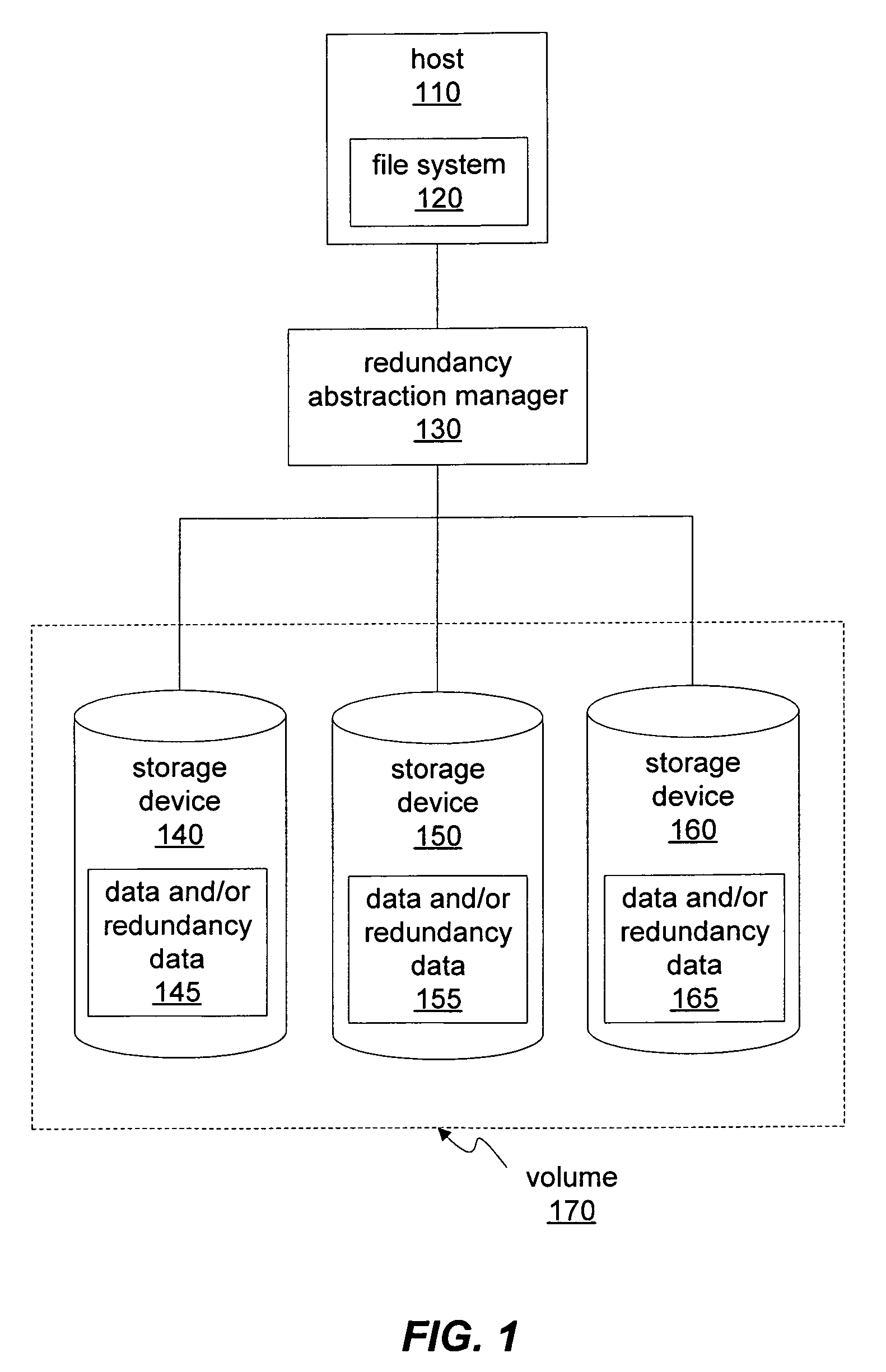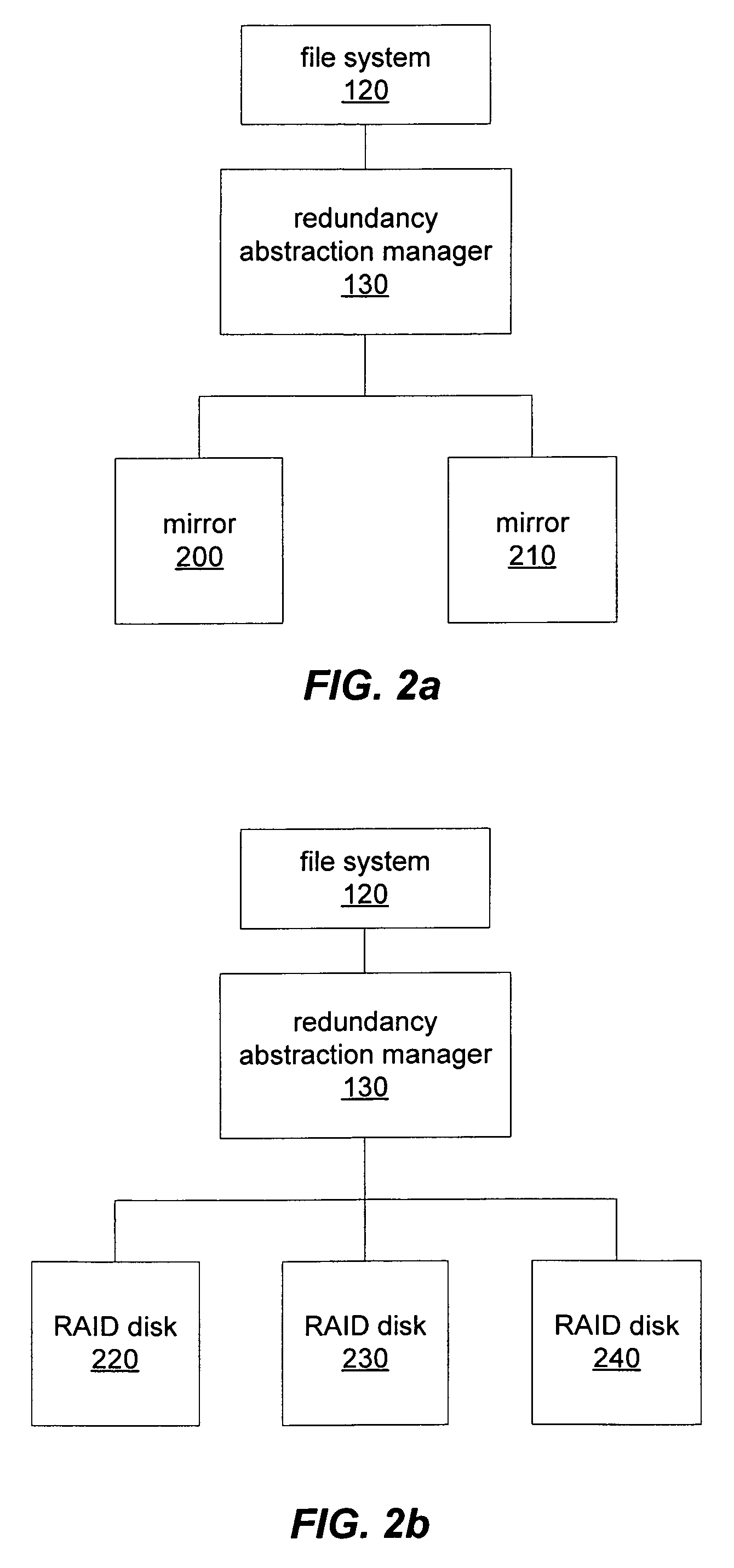System and method for redundant storage consistency recovery
a file system and consistency recovery technology, applied in the field of data storage, can solve the problems of affecting the stability the complexity of the entire storage environment, and the failure of a component in the interconnect infrastructure of one of the mirrored devices, so as to reduce the amount of i/o activity
- Summary
- Abstract
- Description
- Claims
- Application Information
AI Technical Summary
Benefits of technology
Problems solved by technology
Method used
Image
Examples
Embodiment Construction
[0022]FIG. 1 illustrates one example of a storage system that may, according to certain embodiments, implement file system based redundancy consistency recovery. The specific configuration of devices illustrated in FIG. 1 is just one of various configurations on which file system based redundancy consistency recovery may be implemented. As illustrated in FIG. 1, a host device, such as host 110 may include file system 120 that may provide file system services to various client applications not illustrated in FIG. 1. File system 120 may utilize data storage on storage devices, such as storage devices 140, 150, and 160, and may rely upon an abstraction layer, such as provided by redundancy abstraction manager 130 when writing data to and / or reading data from the storage devices. File system processes, or software, such as file system 120 on host 110 may provide an interface between client applications and the data available on volume 170 through redundancy abstraction manager 130. For ...
PUM
 Login to View More
Login to View More Abstract
Description
Claims
Application Information
 Login to View More
Login to View More - R&D
- Intellectual Property
- Life Sciences
- Materials
- Tech Scout
- Unparalleled Data Quality
- Higher Quality Content
- 60% Fewer Hallucinations
Browse by: Latest US Patents, China's latest patents, Technical Efficacy Thesaurus, Application Domain, Technology Topic, Popular Technical Reports.
© 2025 PatSnap. All rights reserved.Legal|Privacy policy|Modern Slavery Act Transparency Statement|Sitemap|About US| Contact US: help@patsnap.com



